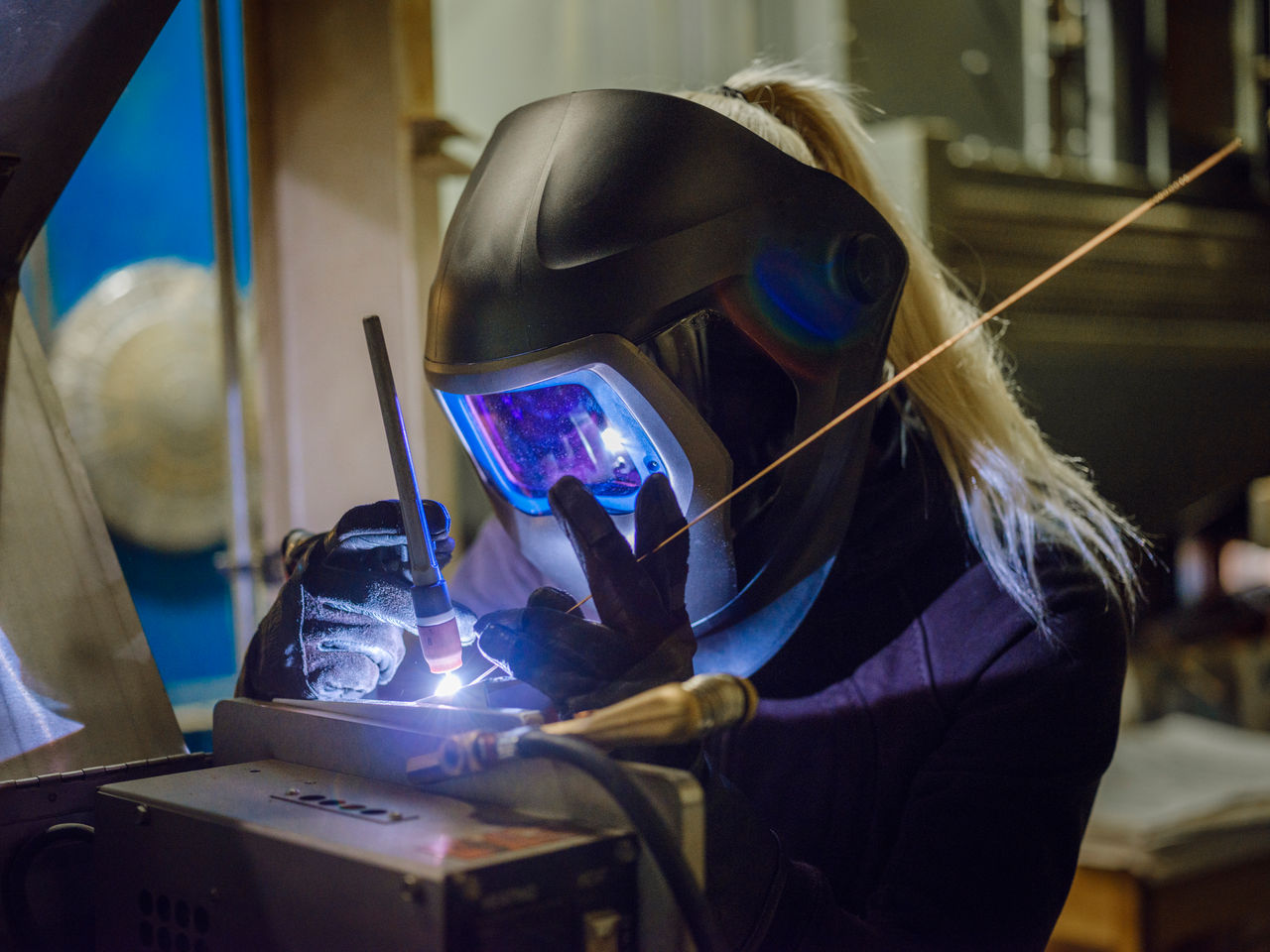If you think about women in welding—and you are a fan of 1980s movies—you may recall the film Flashdance in which actress Jennifer Beals played a character who was a welder by day and a dancer by night. In fact, the movie is set in Pittsburgh, which is home to one of All-State Career’s two Pennsylvania campuses where you can receive training and learn to become a welder.
While Beals helped glamorize the role, the machinery back then was cumbersome, and the workplaces were dark. However, today's technology has introduced new tools and procedures, creating work areas that are fresh and clean.
One thing that has not changed much since the film was released is that women are a minority in the field. According to the U.S. Bureau of Labor Statistics, today, they account for less than four percent of welders. But low numbers should not stop women who like to work with their hands from considering entering the field.
If you are not familiar with welding, it is a procedure that permanently joins metal parts by using electrical currents to create heat that melts and fuses them. Welders work in a variety of manufacturing industries, such as automotive, shipbuilding, and aerospace. Welding is also needed in construction, performing tasks like joining steel beams.
Women have been in the welding field for several generations, dating back to World War II, when thousands of women were recruited to work in “war industries." These female welders built ships, aircraft, vehicles, weapons, and equipment needed by the troops. A 1943 issue of LIFE magazine featured a female welder on the cover and provided an account of their life on the job. But, when the war was over, women lost their jobs to returning service male members.
Today, women join the industry by choice instead of national necessity. A career in welding can offer women the opportunity to build products and create structures that change people’s lives. Welding taps into critical thinking and scientific skills, as well. Welders need to understand the chemical process that takes place when items are welded together. And welders study mathematics to learn about the basic requirements of the job.
Since there are few female welders, the job can offer a chance to form strong camaraderie with other women who work in the field, creating an immediate support system. Being one of the few women in the industry also gives you a chance to be a pioneer and leader, encouraging other women to join the industry.
Welding puts you in the middle of manufacturing. If you enjoy hands-on work and creating products that are used every day, it could be the right career choice for you. Click here for more information. Or call us today at (855) 834-4580 and speak to one of our career counselors.

